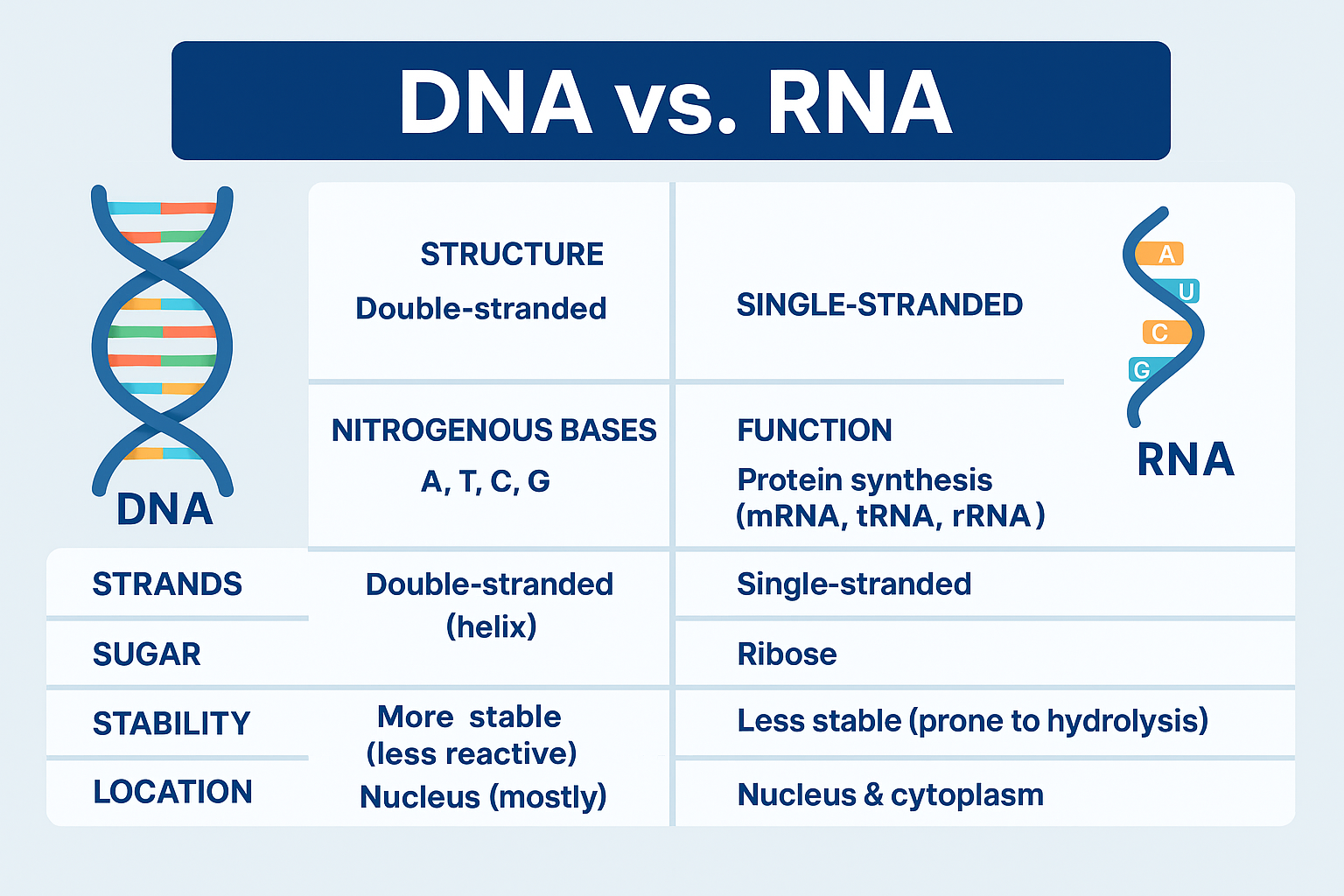🧬 DAT DNA vs. RNA: Structure, Function, and Key Differences for the Exam
DNA and RNA are critical to:
Genetic storage and expression
Transcription and translation
Understanding central dogma and viruses
DAT questions often test structure, base-pairing, and biological function.
🧪 DNA and RNA: The Core Differences
| Feature | DNA | RNA |
|---|---|---|
| Sugar | Deoxyribose | Ribose |
| Strands | Double-stranded | Single-stranded |
| Nitrogenous Bases | A, T, C, G | A, U, C, G |
| Base Pairing | A–T, C–G | A–U, C–G |
| Stability | More stable | Less stable |
| Function | Genetic storage | Protein synthesis |
| Location | Primarily nucleus | Nucleus and cytoplasm |
📚 Key Base Pairing Rules for the DAT
DNA:
A pairs with T (2 H-bonds)
C pairs with G (3 H-bonds)
RNA:
A pairs with U
C still pairs with G
📌 DAT Tip: Be sure to recognize uracil (U) in RNA instead of thymine (T).
⚙️ Types of RNA You Must Know
| RNA Type | Function |
|---|---|
| mRNA | Transcribes DNA message; used in translation |
| tRNA | Transfers amino acids to the ribosome |
| rRNA | Structural and catalytic part of the ribosome |
🧠 DAT Question Examples
“Which nitrogenous base is found in RNA but not DNA?”
“What type of bond connects DNA bases?”
“Which RNA carries amino acids during translation?”
🎯 Call to Action
Want to master genetics before test day?
With King of the Curve, you’ll get:
DAT-style flashcards & matching games
Visual DNA/RNA tutorials
Central dogma quizzes with adaptive feedback
Gamified review to earn Curve Coins
✅ Summary
DNA is double-stranded, contains T, and stores genetic code
RNA is single-stranded, contains U, and enables protein synthesis
Know the base pairing, structure, and biological location
Focus on mRNA, tRNA, rRNA and their roles in the central dogma
Frequently Asked Questions (FAQs)
-
Aim for 4-6 focused hours, ensuring you incorporate breaks to avoid burnout.
-
Practice mindfulness techniques, take practice exams under realistic conditions, and maintain a balanced lifestyle.
-
Set short-term goals, seek support from mentors, and reward yourself for small achievements.
-
Regular exercise improves focus, reduces stress, and enhances overall mental clarity.
-
KOTC offers personalized learning tools, gamification features, and adaptive question banks to help students stay on track without burnout.


